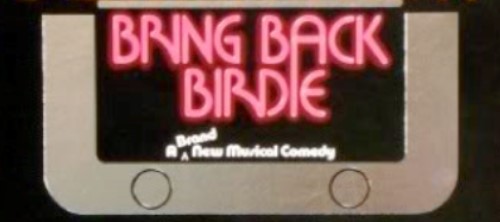Pas de biographie disponible.
Compositeur Musique additionelle Librettiste Parolier Metteur en scène Chorégraphe Producteur création Producteur version
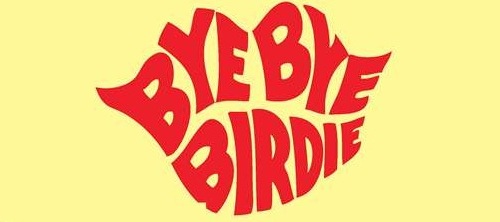
Musical
Musique: Charles Strouse • Paroles: Lee Adams • Livret: Michael Stewart • Production originale: 13 versions mentionnées
Dispo: Résumé Synopsis Génèse Liste chansons
Originally titled Let's Go Steady, the satire on American society is set in 1958. The story was inspired by the phenomenon of popular singer Elvis Presley and his draft notice into the Army in 1957. The rock star character's name, "Conrad Birdie," is word play on the name of Conway Twitty. Twitty is best remembered today for his long career as a country music star, but before that, in the late 1950s, he was one of Presley's rock 'n' roll rivals.
Genèse: The producer Edward Padula had the idea for a musical initially titled Let's Go Steady, a "happy teenage musical with a difference." Padula contracted with two writers, and Charles Strouse and Lee Adams wrote seven songs for their libretto. Padula, Strouse and Adams sought Gower Champion as director/choreographer, who until that time had choreographed only a few musicals. (Fred Astaire and Morton DaCosta had already declined.) However, Champion did not like the book and the writers were fired, with Michael Stewart then hired. Stewart wrote an early version titled Love and Kisses, which focused on a couple thinking of divorce, but whose children persuade them to stay together. Champion wanted "something more". "The 'something more' had been right there in the newspaper. On September 22, 1958, rock-and-roll idol Elvis Presley, having been drafted, boarded a ship for eighteen months in Germany.... There was a media circus including Elvis giving a specially selected member of the Women's Army Corps 'one last kiss'". After brainstorming, Stewart and Adams "came up with the idea of a rock-and-roll singer going off to the army and its effect on a group of teenagers in a small town in Ohio." The name of the singer was Elsworth, then changed to "Conway Twitty before we discovered there was already a Conway Twitty who was threatening to sue us, and then, finally, Conrad Birdie."
Résumé: The fictional story takes place in 1958, centering around Conrad Birdie, a hip-thrusting rock and roll superstar akin to Elvis Presley, Conrad's agent and songwriter, Albert Peterson, and Albert's secretary and love, Rose Alvarez (Rose Grant or Rose DeLeon in some versions), who hails from Allentown, Pennsylvania. Albert finds himself in trouble when Conrad is drafted into the army, so he and Rose come up with a last-ditch publicity stunt to premier one last hit Conrad Birdie record before he is sent to the army. They plan to have Conrad sing Peterson's new song "One Last Kiss" on live television, and give one lucky girl from his fan club a real 'one last kiss' on 'The Ed Sullivan Show' before going off to war. The lucky girl is chosen randomly from Conrad's national fan club, and it happens to be Kim MacAfee. Rose, Conrad, and Albert set off to her house in Sweet Apple, Ohio to prepare for the event. However, things don't go quite as planned; Kim's father becomes obsessed with the prospect of being on The Ed Sullivan Show alongside his daughter, Kim's boyfriend becomes disastrously jealous of Conrad, and Conrad himself becomes tired of the show business life and tries to teach the kids how to party - ultimately getting himself in trouble with the law.
Création: 14/4/1960 - Al Hirschfeld Theatre (Broadway) - représ.
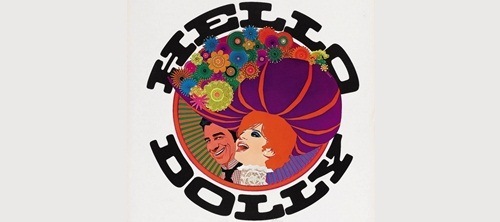
Musical
Musique: Jerry Herman • Paroles: Jerry Herman • Livret: Michael Stewart • Production originale: 16 versions mentionnées
Dispo: Résumé Synopsis Commentaire Génèse Isnpiration Liste chansons
Genèse: Original Broadway production The musical, directed and choreographed by Gower Champion and produced by David Merrick, opened on January 16, 1964, at the St. James Theatre and closed on December 27, 1970, after 2,844 performances. Carol Channing starred as Dolly, with a supporting cast that included David Burns as Horace, Charles Nelson Reilly as Cornelius, Eileen Brennan as Irene, Jerry Dodge as Barnaby, Sondra Lee as Minnie Fay, Alice Playten as Ermengarde, and Igors Gavon as Ambrose. Although facing competition from Funny Girl with Barbra Streisand, Hello, Dolly! swept the Tony Awards that year, winning awards in ten categories (out of eleven nominations) that tied the musical with the previous record keeper South Pacific, a record that remained unbroken for 37 years until The Producers won twelve Tonys in 2001. After Channing left the show, Merrick employed a string of prominent actresses to play Dolly, including Ginger Rogers, Martha Raye, Betty Grable, Pearl Bailey (in an all-black version with Cab Calloway, Mabel King, Clifton Davis, Ernestine Jackson and a young Morgan Freeman), Phyllis Diller, and Ethel Merman after having turned down the lead at the show's inception. Two songs cut prior to the opening — typical Mermanesque belt style songs "World, Take Me Back" and "Love, Look in My Window" — were restored for her run. Thelma Carpenter played Dolly at all matinees during the Pearl Bailey production and subbed more than a hundred times, at one point playing all performances for seven straight weeks. Bibi Osterwald was the standby for Dolly in the original Broadway production, subbing for all the stars, including Bailey, despite the fact that Osterwald was a blue-eyed blonde. Bailey received a Special Tony Award in 1968. The show received rave reviews, with "praise for Carol Channing and particularly Gower Champion." The original production became the longest-running musical (and third longest-running show) in Broadway history up to that time, surpassing My Fair Lady and then being surpassed in turn by Fiddler on the Roof. The Broadway production of Hello Dolly grossed $27 million. Hello, Dolly! and Fiddler remained the longest-running Broadway record holders for nearly ten years until Grease surpassed them. Tour and regional Dollys Dorothy Lamour, Eve Arden, Ann Sothern, Michele Lee, Alice Faye, Edie Adams, and Yvonne De Carlo played the role on tour. Molly Picon appeared as Dolly in a 1971 production by the North Shore Music Theatre of Beverly, Massachusetts. Lainie Kazan starred in a production at the Claridge Atlantic City. Both Tovah Feldshuh and Betsy Palmer played Dolly in productions by the Paper Mill Playhouse. Marilyn Maye also starred in several regional productions and recorded a full album of the score. Original London production Hello, Dolly! premiered in the West End at the Theatre Royal, Drury Lane on December 2, 1965 and ran for 794 performances. Champion directed and choreographed, and the cast starred Mary Martin as Dolly and Loring Smith as Horace Vandergelder, with Johnny Beecher as Barnaby, Garrett Lewis as Cornelius, Mark Alden as Ambrose Kemper and Marilynn Lovell as Irene Molloy. Dora Bryan replaced Martin during the run. Revivals The show has been revived three times on Broadway: • November 6, 1975 - December 28, 1975, Minskoff Theatre - Starring Pearl Bailey and Billy Daniels in an all-black production (42 performances) • March 5, 1978 - July 9, 1978, Lunt-Fontanne Theatre - Starring Carol Channing & Eddie Bracken. (147 performances) • October 19, 1995 - January 28, 1996, Lunt-Fontanne Theatre - Starring Carol Channing & Jay Garner (116 performances) In London's West End, the show has been revived three times: • 1979 - Starring Carol Channing at the Theatre Royal, Drury Lane and Shaftesbury Theatre • January 3, 1984 - April 27, 1984 - Starring female impersonator Danny La Rue as Dolly at the Prince of Wales Theatre • July 30, 2009 - September 12, 2009 - Starring Samantha Spiro (Dolly) and Allan Corduner (Horace) at the Open Air Theatre, Regent's Par. Spiro won the Olivier Award for her performance. International productions • The original German production of Hello, Dolly!, with the title character's surname "Wassiljewa" (Vasilyeva) rather than "Levi," starred Tatjana Iwanow (Tatyana Ivanov). • The first production in Spanish was held in 1967 at the Teatro Nacional in Buenos Aires, starring Argentinian actress and tango singer Libertad Lamarque, who also did it in Mexico. • In 1996, Mexican diva Silvia Pinal starred in the Spanish language version of the musical, ¿Qué tal Dolly? ("What's Up, Dolly?"), opposite Ignacio Lopez Tarso in Mexico City. • In 1985, Cuban diva Rosita Fornes played Dolly Levis in a Cuban production of Hello, Dolly by the Teatro Karl Marx in Havana, Cuba. She also played the role in Camaguey city and in a television production under director Manolo Rifat. Tours • Mary Martin starred in a US tour, starting in April 1965 and playing in 11 cities. The production also toured in Japan, Korea and Vietnam for a special USO performance for U.S. troops. • A second US tour began in September 1965, headed by Channing, and ran for two years and nine months. Eve Arden and Dorothy Lamour were replacements. • In 2008, Anita Dobson toured in the UK.
Résumé: Dans les années 1890, Dolly Gallagher Levi est veuve et marieuse à New York. Horace Vandergelder, riche marchand de Yonkers, l’engage pour lui trouver une moitié convenable. Tout en s’efforçant de lui présenter quelques partis, Dolly a en réalité déjà décidé que la «demi-fortune» de Horace lui convenait tout à fait. Pour arriver à ses fins, elle s’assure la sympathie des deux employés de la boutique, Cornelius et Barnaby, véritablement harcelés par leur patron peu avenant, et de la nièce de celui-ci, en favorisant leurs rencontres avec leurs bien-aimés respectifs.. aux frais de Mr Vandergelder ! Tout sera bien qui finira bien, après de joyeux quiproquos, des chansons, des danses, des parades, des portes qui claquent, des plateaux qui tournoient, des poulets farcis qui volent, des tartes à la crème, j’en passe et des meilleures.
Création: 16/1/1964 - St. James Theatre (Broadway) - 2844 représ.
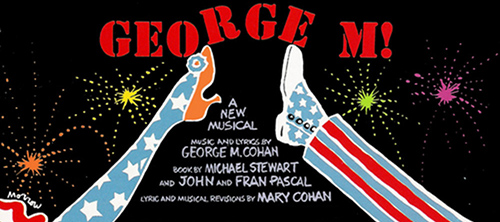
Musical
Musique: George M. Cohan • Paroles: George M. Cohan • Livret: Francine Pascal • John Pascal • Michael Stewart • Production originale: 1 version mentionnée
Dispo: Résumé Synopsis Liste chansons
George M! est un musical de Broadway basé sur la vie de George M. Cohan, la plus grande star de Broadway de son époque qui était connue sous le nom de "L’homme qui possédait Broadway."
Genèse:
Résumé: L’histoire couvre la période de la fin des années 1880 à 1937 et se concentre sur la vie et la carrière dans le sectacle de George M. Cohan, depuis ses débuts dans le Vaudeville avec ses parents et sa sœur jusqu’à son succès ultérieur en tant que chanteur, danseur, compositeur, parolier, metteur en scène et producteur à Broadway. Le spectacle comprend des chansons à succès comme "Give My Regards To Broadway", "You’re a Grand Old Flag", et "Yankee Doodle Dandy."
Création: 10/4/1968 - Palace Theatre (Broadway) - 433 représ.

Musical
Musique: Jerry Herman • Paroles: Jerry Herman • Livret: Michael Stewart • Production originale: 4 versions mentionnées
Dispo: Résumé Synopsis Génèse Liste chansons
Genèse: Ed Lester, the director of the Los Angeles Civic Light Opera, suggested the project to Jerry Herman, who then involved Michael Stewart. David Merrick agreed to produce, and Gower Champion was engaged to direct and choreograph. Although Champion had initially declined the offer, he eventually accepted, especially when it was decided to hold the pre-Broadway tryouts in California. Robert Preston was hired as Mack. For the role of Mabel, several actresses were engaged and then let go, including Marcia Rodd and Kelly Garrett, before the young Bernadette Peters finally joined the cast. Pre-Broadway tryouts Mack & Mabel opened in pre-Broadway tryouts in San Diego on June 17, 1974[2] and then Los Angeles, with brisk box office sales in both cities. According to The New York Times, " 'Mack and Mabel' has been doing rather better than its probable guarantee [in Los Angeles] – up to $150,000 in its final seven-day period." The musical received reviews that ranged "from fair to phenomenal in San Diego, Los Angeles, and St. Louis". The Los Angeles reviews were "encouraging but guarded", and warned "of the excessive comic sequences, uneven book, and, most especially, the dark ending." Buoyed by the critical response and initial public enthusiasm for the show, Herman and company ignored a number of warning signs. Neither Sennett nor Normand was a particularly lovable character, and their story was darker than that usually found in a musical. Preston (as Sennett) was too old for Peters (Mabel), and their characters lacked chemistry. Champion devised a number of eye-catching visual effects and spectacular dance sequences set to Philip J. Lang's orchestrations, but their brightness proved to be too great a contrast with the somber mood of the piece. His concept of setting the action in the corner of a huge studio soundstage created problems with the set and limited the staging to the extent that it was seen as static and boring. Audiences "were not ready for a down-beat saga about a cocaine-sniffing movie queen." Efforts were made to resolve the problems at The Muny in St. Louis, where the musical ran for one week starting August 19, 1974, but this venue was a "terrible mistake". Because The Muny was so large, the performers overplayed and pulled the show out of shape. By the Washington, D.C. Kennedy Center engagement, "nothing was working", and Champion changed the staging of scenes that had previously worked. Richard Coe in his The Washington Post review stated that it had landed at the Kennedy Center "with all the zip of a wet, very dead flounder." Broadway The musical opened at the Majestic Theatre on Broadway on October 6, 1974, and closed on November 30, 1974 after 66 performances and 6 previews. Scenic design was by Robin Wagner, costume design by Patricia Zipprodt, and lighting design by Tharon Musser. In addition to Preston and Peters, the cast featured Lisa Kirk as Lottie Ames and James Mitchell as William Desmond Taylor. Despite only fair reviews and the short run, the show received eight Tony Award nominations: for Best Musical, the book, direction, choreography, lead actor, lead actress and designs but did not win any. Herman, whose melodic score had received the best notices, was not nominated. He was deeply disappointed, since the project had been one of his favorites (and remains so), and he felt producer David Merrick had done little to promote it, saying "He never invested in advertising. He never came to the theatre." Despite its failure, the show has developed a cult following.
Résumé: Mack and Mabel deals with the complex relationship between Max Sennet, a temperamental, workaholic film director and Mabel Normand, a waitress who became one of his biggest stars. In a series of flashbacks, Sennett recalls the time he discovered Mabel back in 1911, her rise to stardom, their love affair, when she leaves him to work for the “serious” director W.D. Taylor and finally, her tragic death from a heroine overdose. In the end, Sennet creates his own happy ending plotting a scene in which he and Mabel marry.
Création: 6/10/1974 - Majestic Theatre (Broadway) - représ.
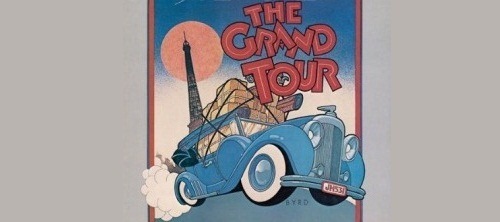
Musical
Musique: Jerry Herman • Paroles: Jerry Herman • Livret: Mark Bramble • Michael Stewart • Production originale: 2 versions mentionnées
Dispo: Résumé
Genèse:
Résumé: Based on S. N. Behrman's play Jacobowsky and the Colonel, the story concerns an unlikely pair. S.L. Jacobowsky, a Polish-Jewish intellectual, has purchased a car he cannot drive. Stjerbinsky, an aristocratic, anti-Semitic colonel, knows how to drive but has no car. When the two men meet at a Paris hotel, they agree to join forces in order to escape the approaching Nazis. Together with the Colonel’s girlfriend, Marianne, they experience many adventures while on the road, but trouble ensues when Jacobowsky falls in love with the young girl.
Création: 27/12/1978 - Palace Theatre (Broadway) - représ.
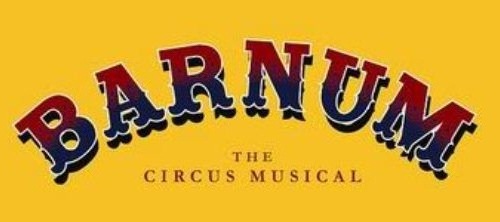
Musical
Musique: Cy Coleman • Paroles: Michael Stewart • Livret: Mark Bramble • Production originale: 9 versions mentionnées
1
Dispo: Résumé Synopsis Génèse Liste chansons
Genèse: Original Broadway Production) The original production opened at the St. James Theatre on Broadway, on April 30, 1980 and closed on May 16, 1982 after 854 performances and 26 previews. It was directed and choreographed by Joe Layton, with scenic design by David Mitchell, costume design by Theoni V. Aldredge, and lighting design by Craig Miller. The musical starred Jim Dale as P.T. Barnum, Glenn Close as Charity Barnum, Marianne Tatum as Jenny Lind, Terri White as Joice Heth, and Terrence Mann as Chester Lyman. Original London Production The show made its West End debut on June 11, 1981 at the London Palladium, where it ran for 655 performances. The London cast included Michael Crawford as P.T. Barnum, Deborah Grant as Charity Barnum and Sarah Payne as Jenny Lind. Crawford reprised his role opposite Eileen Battye in a UK Tour of the show which ran between 1984 and 1986, stopping off at various venues including the Manchester Opera House and Victoria Palace Theatre. The tour was recorded for television and broadcast by the BBC in 1986. It was later released on VHS and DVD. Other productions International productions were staged in Australia (1982) starring Reg Livermore, Madrid (1984) starring Emilio Aragón, Florida (2008) starring Brad Oscar. In 2008, Cameron Mackintosh had reportedly voiced interest in producing a London or Broadway revival of Barnum starring either John Barrowman or Neil Patrick Harris.
Résumé: Barnum raconte l'histoire du Prince of Humbug, Phineas Taylor Barnum. Malgré les objections de sa femme, Charity, Barnum essaie de créer un spectacle dans lequel les attractions principales sont monstres de société. On y retrouve la plus vieille femme en vie, Joice Heth, le plus petit homme du monde, Tom Thumb, et encore mieux, un chanteur d'opéra suédois glamour, Jenny Lind. Finalement, Barnum consent à abandonner le spectacle et commencer une vie normale pour apaiser Charity. A la fin, après que la mort de Charity, Barnum revient dans le monde du cirque, très à la mode, en formant une association avec James A. Baily. Alors, les deux hommes créent 'The Greatest Show on Earth'.
Création: 30/4/1980 - St. James Theatre (Broadway) - représ.

Musical
Musique: Harry Warren • Paroles: Al Dubin • Livret: Mark Bramble • Michael Stewart • Production originale: 14 versions mentionnées
Dispo: Résumé Synopsis Commentaire Génèse Isnpiration Liste chansons
42nd Street, une comédie musicale écrite en 1980, est une célébration des claquettes des comédies musicales des années 1920 et 1930
Genèse: Producer David Merrick "took a huge gamble with his $3 million production based on the 1933 Warner Brothers film musical", as "only one other show had made the transfer from original movie musical to the stage -- 'Gigi,' a flop in 1974."[1][2] He felt audiences once again were ready to embrace the nostalgia craze started by the successful revivals of No, No, Nanette, Irene, and his own Very Good Eddie several years earlier, and augmented the familiar songs from the film's soundtrack with a liberal dose of popular tunes from the Dubin-Warren catalogue. According to theatre historian John Kenrick, "When the curtain slowly rose to reveal forty pairs of tap-dancing feet, the star-studded opening night audience at the Winter Garden cheered…Champion (who had no tap training) followed this number with a series of tap-infused extravaganzas larger and more polished than anything Broadway really had in the 1930s." Original Broadway) In June 1980, the musical premiered in out-of-town tryouts at the Kennedy Center for the Performing Arts in Washington, D.C. After six previews, the Broadway production opened on August 25, 1980 at the Winter Garden Theatre, eventually moving to the Majestic and then the St. James, closing after 3,486 performances. (Frank Rich called this a sign of the "shift of power" on Broadway, as the show had to leave the Winter Garden to make way for Cats and the Majestic to accommodate The Phantom of the Opera.) The original cast included Jerry Orbach as Julian Marsh, Tammy Grimes as Dorothy Brock, Wanda Richert as Peggy Sawyer, and Lee Roy Reams as Billy Lawlor. Replacements later in the run included Barry Nelson and Don Chastain as Julian, Elizabeth Allen, Dolores Gray, and Millicent Martin as Dorothy, and Lisa Brown and Karen Ziemba as Peggy. The show's designers, Robin Wagner (sets), Theoni V. Aldredge (costumes), and Tharon Musser (lights) were the same team who had designed the original Broadway production of A Chorus Line. The musical is the 12th longest runnning show in Broadway history, as of December 2010. This Tony Nominated wardrobe, designed by Theoni V. Aldredge, is on display at the Costume World Broadway Collection in Pompano Beach, Florida. However, the opening night triumph was overshadowed by tragedy. Following a 5 minute standing ovation, Merrick went onstage and stated, "It is tragic…Gower Champion has died." He went on to explain that Champion had died of cancer just hours before the performance, "when he said that Mr. Champion had died, there were gasps and screams." The producer had advised only Bramble of Champion's death and managed to keep the news a secret from the cast (including Richert, the director's girlfriend), crew, and the public prior to his announcement. 42nd Street proved to be not only Champion's last show but Merrick's final success. Merrick lived until 2000, but, as described by Anthony Bianco, 42nd Street "was his last big hit, his swan song." West End - 1984 The West End production opened at the Theatre Royal Drury Lane on August 8, 1984. The career of teenaged Catherine Zeta-Jones, a chorus member in the 1984 West End production, was launched when a vacation and an illness felled both the actress portraying Peggy Sawyer and her understudy on a night one of the producers happened to be in the audience. Zeta-Jones filled in and was impressive enough to be cast permanently in the role shortly afterward. Broadway revival - 2001 Bramble revised the book for and directed the Broadway revival, with choreography by Randy Skinner (dance assistant for the original production). It opened, after 31 previews, on May 2, 2001 at the Foxwoods Theatre (formerly the Ford Center for the Performing Arts), where it ran for 1,524 performances. The cast included Michael Cumpsty as Julian, Christine Ebersole as Dorothy, Kate Levering as Peggy, and David Elder as Billy. Meredith Patterson, who made her Broadway musical debut in the chorus and was the understudy for the role of Peggy Sawyer, took over the role in August 2001. Todd Lattimore, who was a swing and understudy took over the role of Billy. Other notable replacements included Patrick Cassidy and Tom Wopat as Julian and Shirley Jones and Beth Leavel as Dorothy. UK Tour - 2007 The Broadway revival production, by UK Productions, toured the UK in 2007. The cast included Paul Nicholas as Julian for the first part of the tour, later replaced by Dave Willetts, Julia J Nagle as Dorothy, Jessica Punch as Peggy and Ashley Nottingham as Billy.
Résumé: "42nd Street" est l'histoire d'une jeune actrice humble et naïve prénommée Peggy Sawyer qui est venue pour auditionner pour une nouvelle comédie musicale de Broadway. Malheureusement, à cause de sa nervosité, Peggy arrive en retard à l'audition et manque sa chance de joindre le chœur. Heureusement, Peggy a été remarquée par le célèbre metteur en scène, Marais Julien, et il donne à Peggy sa chance. Cependant, l'actrice principale vieillissante, Dorothy Brock, déteste rapidement Peggy. Le soir de l'opening night, Mlle. Brock tombe et se casse la cheville. La panique prend toute la compagnie, car le spectacle est vraisemblablement condamné à la fermeture, jusqu'à ce que l'on suggère que Peggy reprenne le rôle. En seulement trente-six heures, Peggy apprend vingt-cinq pages, six chansons et dix numéros de danse et devient une star.
Création: /7/1980 - Kennedy Center for the Performing Arts (Washington) - 3486 représ.
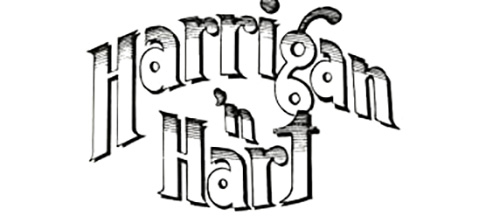
Musical
Musique: Max Showalter • Paroles: Peter Walker • Livret: Michael Stewart • Production originale: 1 version mentionnée
Dispo: Commentaire Génèse Liste chansons
Ce flop est une des incursions de l’écrivain Michael Stewart dans le monde des biographies de stars du show-business: "George M!" (1968) était au sujet de Cohan, et s'est joué pendant un an; "Mack & Mabel" (1974) s'est intéressé à Mack Sennett et Mabel Normand et a tenu l'affiche deux mois; "Barnum" (1980) explorait la vie et l’époque de P. T. Barnum et a triomphé pendant deux ans; et "Harrigan ’n Hart" n’a réuni que 4 représentations (en dehors de "Mack & Mabel", ses trois autres comédies musicales biographiques ont été mise en scène par Joe Layton).
Genèse: La comédie musicale a été partiellement basée sur le matériel compilé par Nedda Harrigan Logan, qui était la fille de Harrigan et plus tard l’épouse du réalisateur Joshua Logan. Edward (Ned) Harrigan (1845-1911) et Tony Hart (1855-1891) sont un duo très populaire qui a joué dans dix-sept « Mulligan Guard » et autres comédies musicales réussies au cours de la période 1878-1885. Plus tôt, Harrigan avait ajouté des chansons à des sketchs qu’il avait écrits pour des revues de variétés, et à partir de là, il a écrit les scénarios et les paroles de la série « Mulligan Guard » qui anticipaient le style et le format des comédies musicales de Broadway. Ses comédies musicales se déroulent aux États-Unis et, par leur humour ethnique bienveillant, célèbrent la vie de la marée d’immigrants européens qui viennent faire de l’Amérique leur patrie. "Harrigan ’n Hart" relate le partenariat professionnel du duo et sa dissolution lorsque Hart (Mark Hamill) est devenu mécontent que Harrigan (Harry Groener) soit à la fois un artiste et un écrivain (et Hart a été envouragé par son vicieuse et calculatrice femme Gerta, jouée par Christine Ebersole). Le scénario laissait également entendre que - peut-être - Hart aurait refoulé une ttirance pour Harrigan. La comédie musicale aborde enfin la maladie de Hart et sa mort (l’intrigue contourne la question de savoir s’il avait la syphilis) et se termine en une séquence onirique où Harrigan organise une représentation au profit de Hart en détresse financière, moment où Gerta fait un revirement complet et se transforme en une âme compréhensive . La partition était un mélange de nouvelles chansons avec des paroles de Peter Howard et de la musique de Max Showalter et de vieilles chansons avec des paroles de Harrigan et de la musique de David Braham.
Résumé:
Création: 31/1/1985 - Longacre Theatre (Broadway) - 4 représ.
